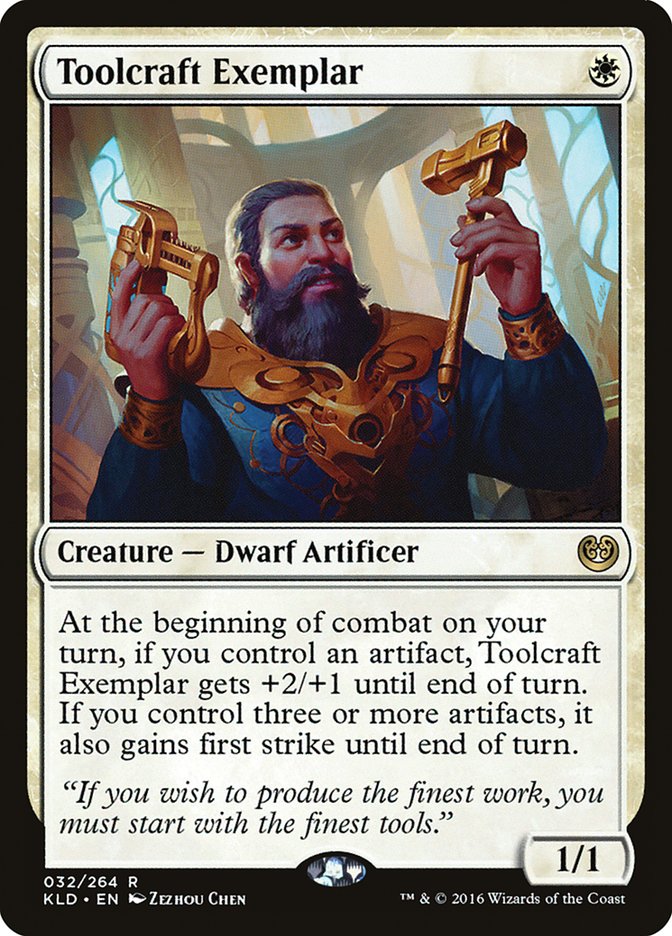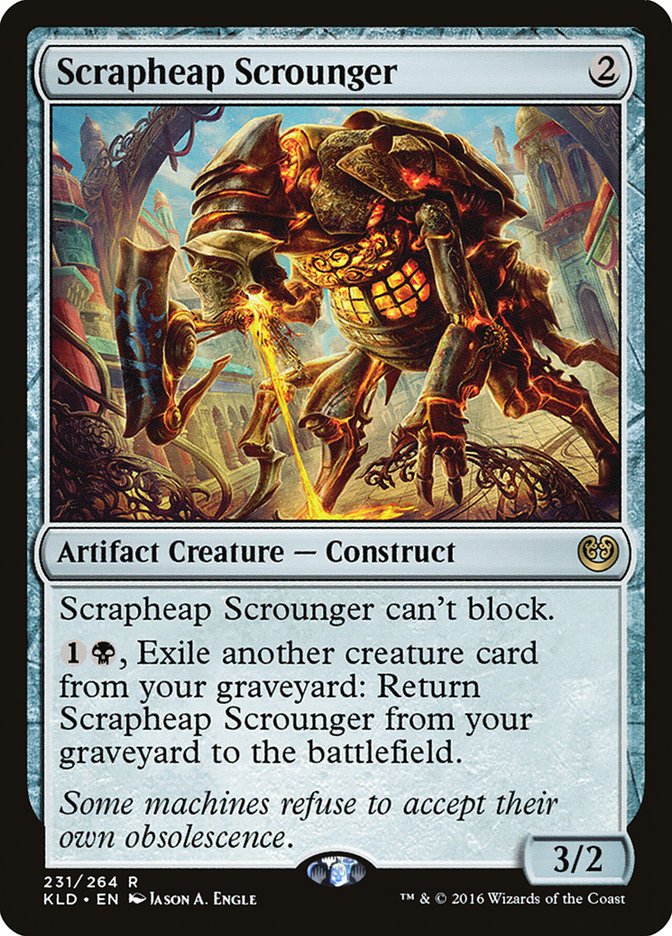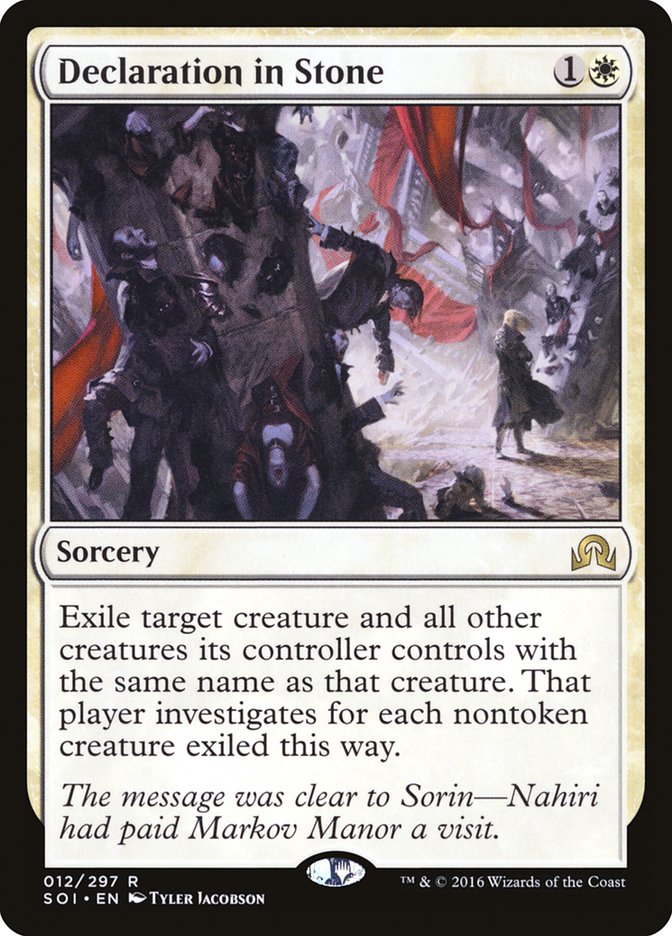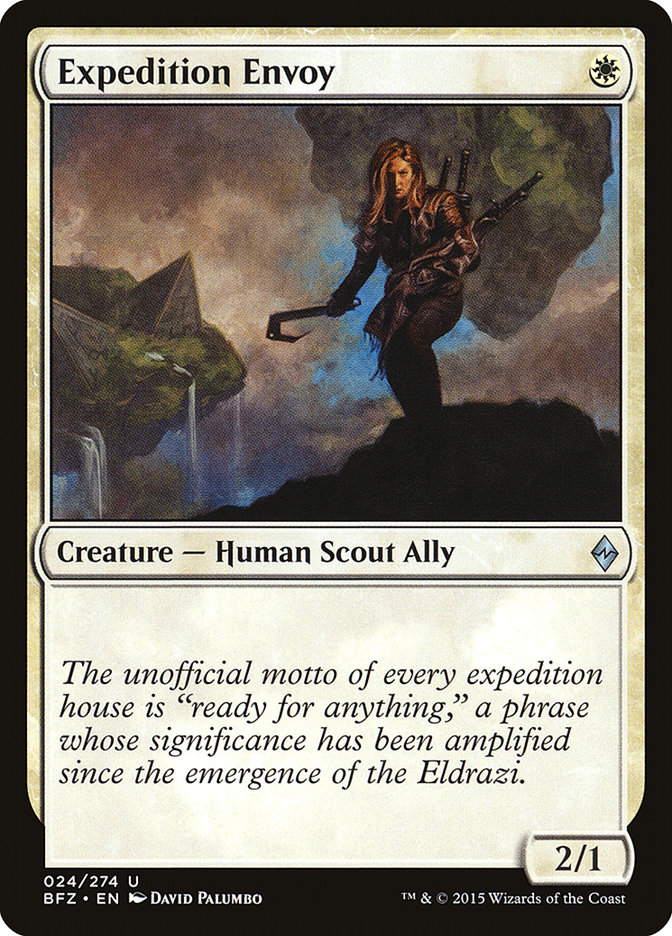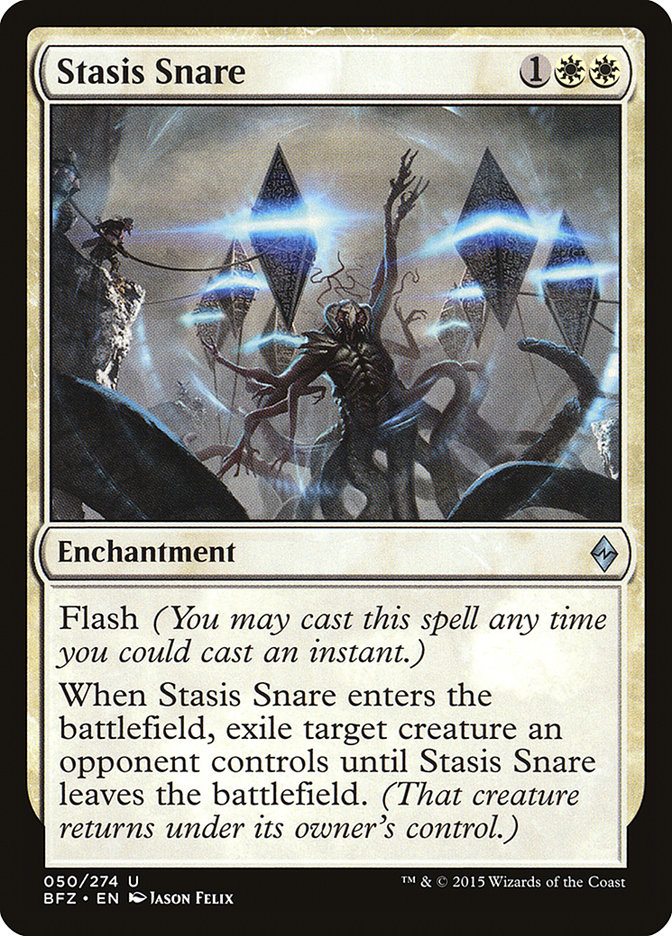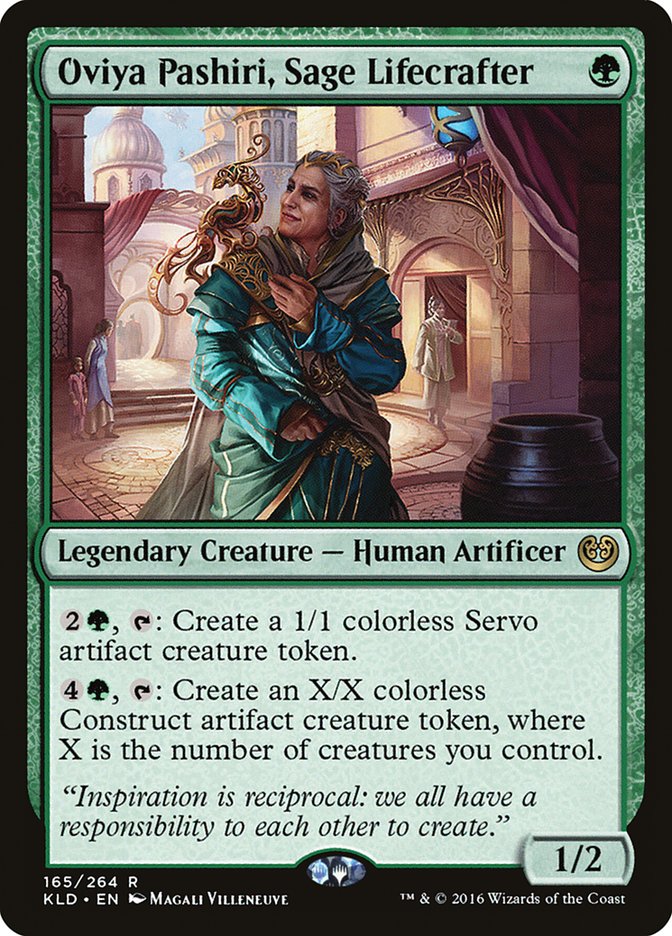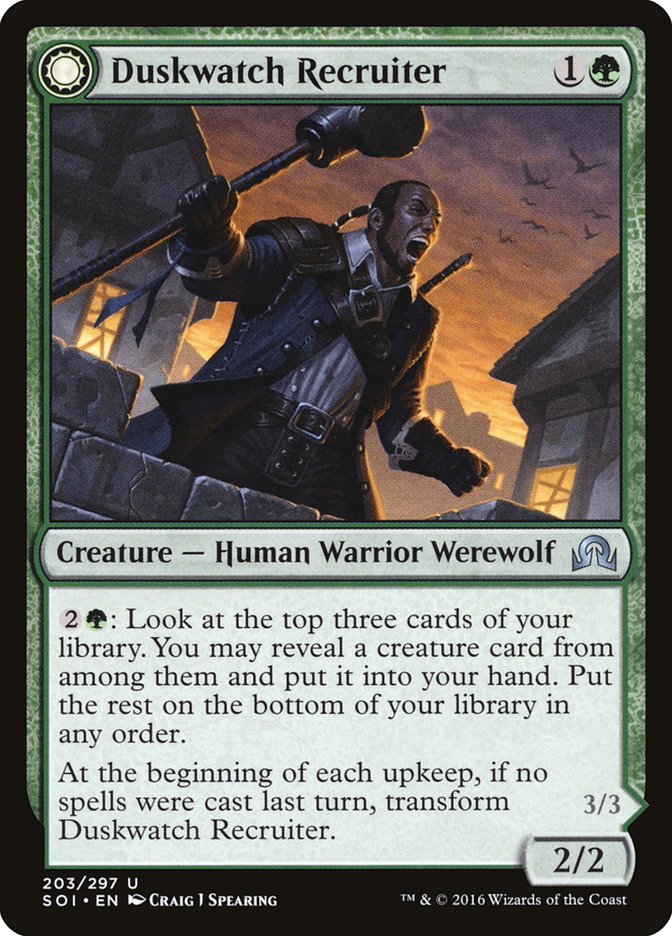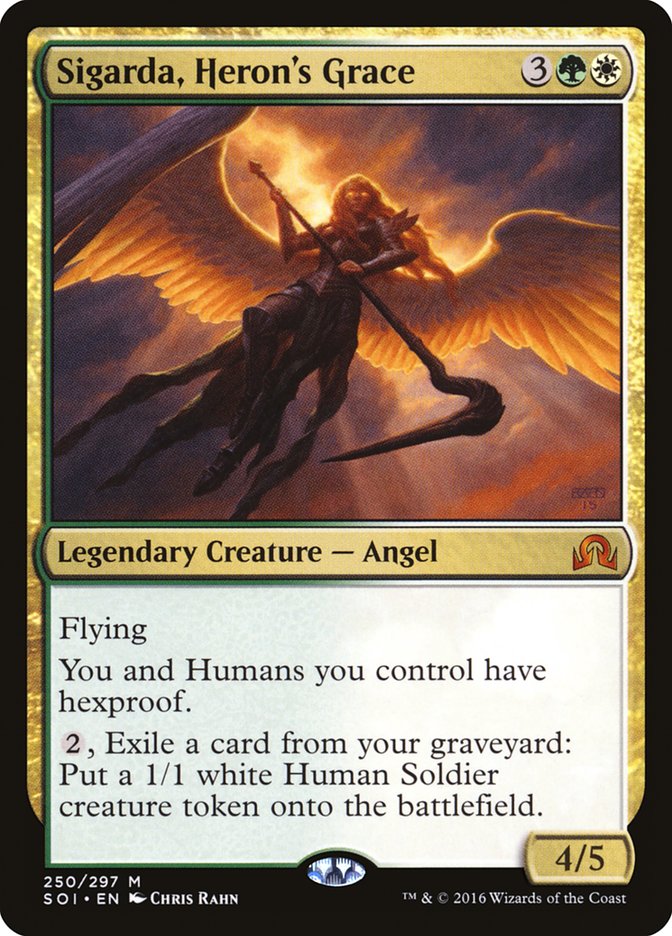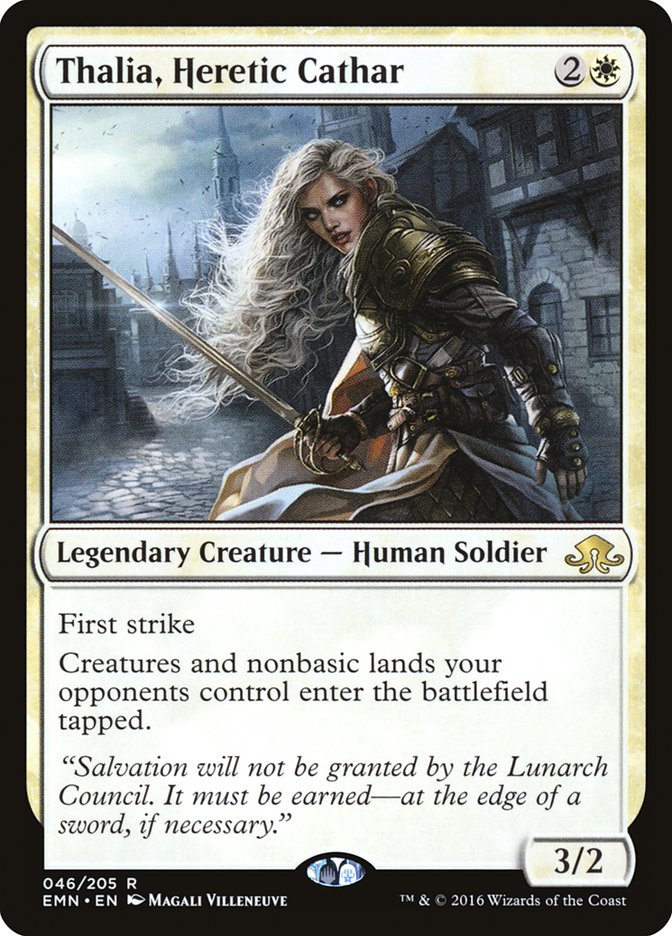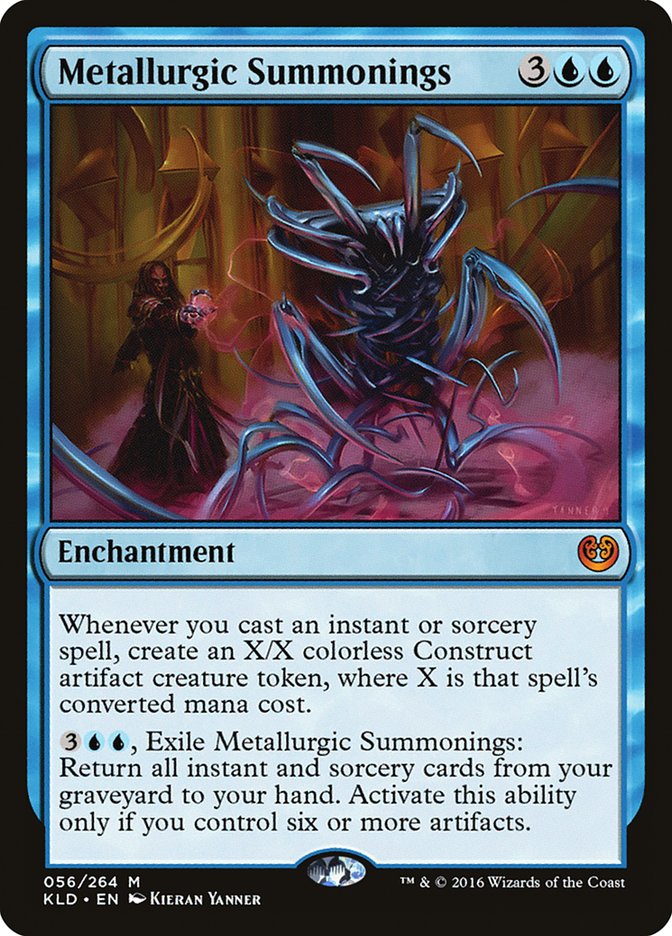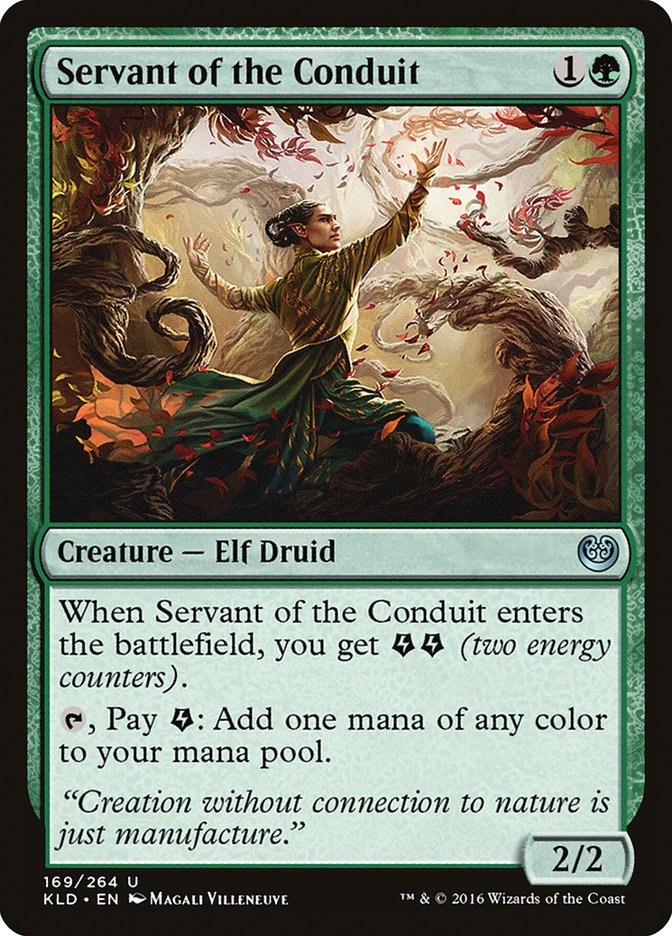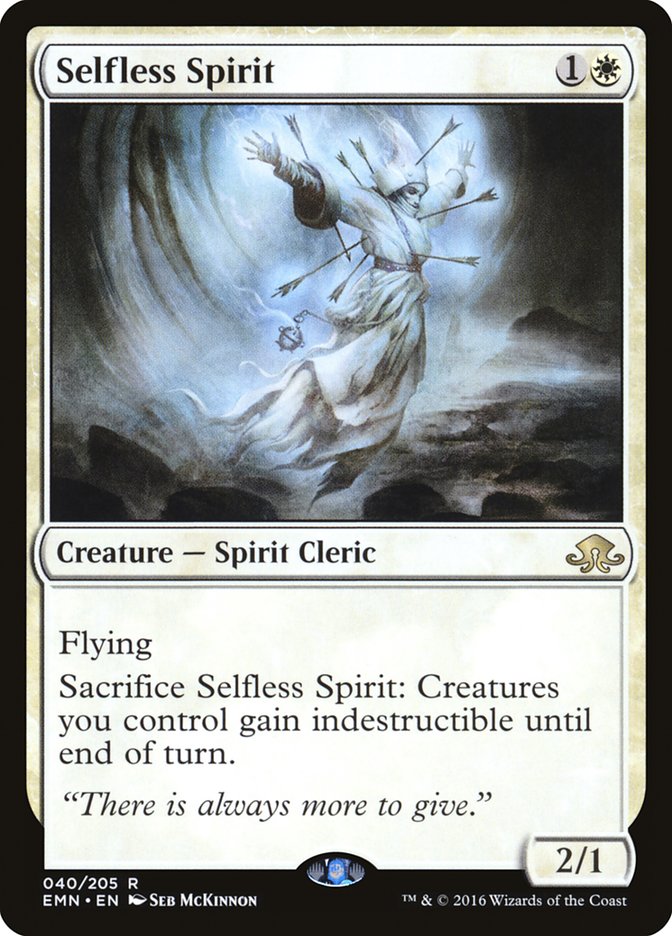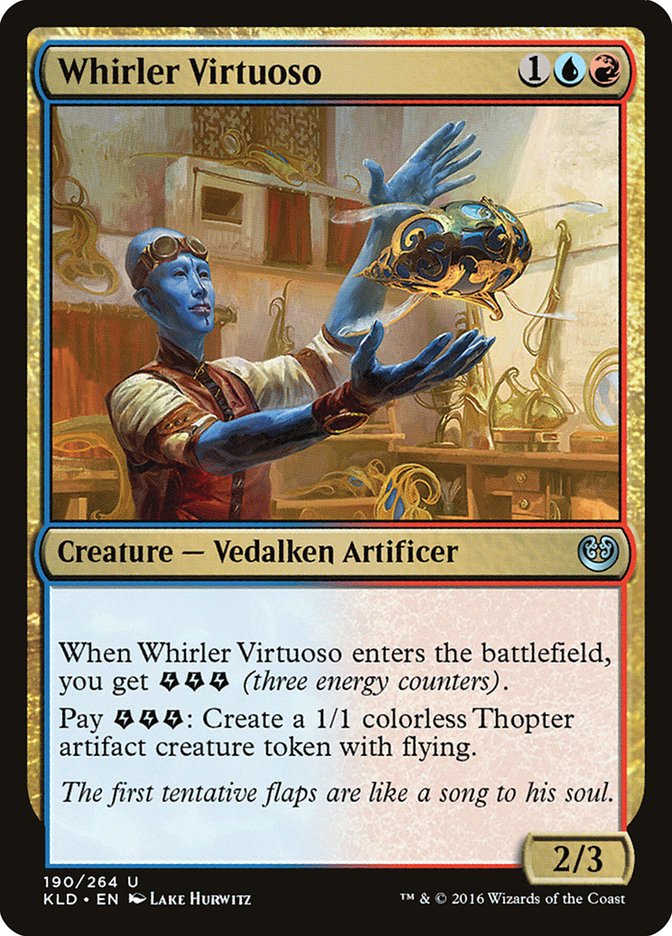This weekend Craig Wescoe and I played W/G Humans in Grand Prix Denver. He went 12-3, losing a win-and-in for Top 8 in the last round, and I went 11-3-1. I think the deck was extremely good for the event despite the fact that this may have been one of the worst weeks to play it.
When I wrote last week that I intended to play Toolcraft Exemplar and Scrapheap Scrounger, that was true, but later, Craig showed me this deck and told me he was going to play it.
I don’t always look to Craig for deck selection because I’m willing to play a wider range of decks than he is, but I think he’s very good at choosing the right deck from among the decks he’s willing to play, so I figured that if I was interested in playing something that was the kind of deck he’d play, I should probably trust him and play the deck he’s playing instead. In other words, don’t go half Wescoe. Either go full Wescoe and do something else, which I guess is to say: never play a deck he’s seriously considered or built but dismissed.
Unfortunately, when he told me he was on W/G, I didn’t have a lot of time left. I played nine matches with the deck and went 6-3, but I liked how it played and had a lot of fun playing it. I figured it was solid enough that I could trust him. Then I talked to him Friday night before the tournament and asked how much he’d played with it. He told me he’d played six matches, but he won them all, but none of them were against any of the popular decks. What had I gotten myself into?
The list we played was our update of a deck that I believe was designed by Dan Duong and sent to Craig. When I first saw it, I thought it looked like a normal deck with some weird gold cards. I had no idea how good it would be, but it was clearly a lot slower than the decks I’d been playing. When I played it, I was genuinely blown away by how well the gold cards (Heron’s Grace Champion and Sigarda, Heron’s Grace) played. When the question marks in the deck turned out to be A+ cards, the list started to look really good. Here’s what we played:
Creatures (25)
- 2 Expedition Envoy
- 4 Thraben Inspector
- 2 Sigarda, Heron's Grace
- 4 Thalia's Lieutenant
- 3 Tireless Tracker
- 4 Duskwatch Recruiter
- 2 Thalia, Heretic Cathar
- 4 Heron's Grace Champion
Lands (25)
Spells (10)

Six removal spells is something of a default for Craig’s school of white aggressive decks, and I’ve been happy with that throughout several different formats, so I liked the look of three Declaration in Stone and three Stasis Snare. Beyond that, it was mostly just a matter of playing a solid curve of the best creatures available.
Expedition Envoy is very good for pressuring creature-light decks, and it becomes a high-power creature in conjunction with Thalia’s Lieutenant and Heron’s Grace Champion, which helps with gaining more life. It was solid enough and I liked having more than four one-drops, but I’m not sure if it’s better than Oviya Pashiri, Sage Lifecrafter. Oviya avoids the one-toughness liability against Liliana, the Last Hope, and it has a very powerful ability in battlefield stalls, but it hits much less hard and the deck already has a lot of mana sinks. It seems odd, but I could imagine a split of one Oviya and one Expedition Envoy.
Duskwatch Recruiter, Thalia’s Lieutenant, and Smuggler’s Copter are all as fantastic as they’ve always been. People haven’t been playing Duskwatch Recruiter lately because there haven’t been any decks it fits cleanly in, especially because Vehicles and planeswalkers cut into creature counts, thereby decreasing its effectiveness, but it’s still every bit as powerful as it always was.
Tireless Tracker and Duskwatch Recruiter are format-warping cards. They’re aggressive threats that outmatch most card advantage engines, but neither one sees that much play. The fact that this deck has both of them gives it an amazing amount of grinding power.
With aggressive decks full of small creatures, drawing extra cards in the late-game often isn’t enough to keep up with the big spells your opponent plays, so you lose even if you can keep up on cards. In this deck, the synergies between the cards mean that, if you add several of your cards together, they’re each greater than the sum of their parts, and they combine to match the more powerful spells in the format. Playing a solid number of removal spells helps ensure that you don’t lose to larger opposing creatures or something like a Kalitas, Traitor of Ghet getting out of hand.
Sigarda, Heron’s Grace is extremely important. As a 4/5 flier, it blocks Archangel Avacyn and Gisela, the Broken Blade. The fact that it gives you hexproof means that it turns off Emrakul, the Promised End’s trigger, and the tokens it makes let you build up a much larger battlefield than Ishkanah, Grafwidow.
Heron’s Grace Champion is also an important piece of the puzzle. As the battlefield builds up and your Tireless Trackers grow and Humans pick up counters from Thalia’s Lieutenants, which can also get very large, Duskwatch Recruiter and Tireless Tracker ensure that you’ll eventually find a Heron’s Grace Champion, and that will make sure that you have as much time as you need without getting burned out by Ishkanah, Grafwidow or killed by an unanswered flier. It almost always immediately ends the game against any aggressive deck, and it’s easy to turn games against W/U Flash into a race if that’s what you want to do, and Heron’s Grace Champion never loses a race.
The end result is a tight package of strong cards that work amazingly well together. I believe the deck is favored at every stage of the game against both W/U Flash and B/G Delirium.
In both cases, you spend your mana better on better creatures on the first two turns. You’ll usually come out of the gate as the aggressor, putting you ahead in the early-game. Duskwatch Recruiter puts some really awkward pressure on W/U, since a 3/3 body is very good against them, which makes trying to leave Spell Queller up on your turn very painful, and they don’t have enough removal to stop Tireless Tracker from running away with things if they can’t finish you off quickly.
This is where the gold cards come in. If you can ever resolve a Heron’s Grace Champion in combat, as I mentioned, racing is off the table, and Sigarda, Heron’s Grace blocks all of their creatures including Avacyn. Gideon is their other big trump in general, but here you have enough pressure that it’s difficult to protect, and if they do protect it, it’s not always that impactful. The 2/2s don’t match up well, and if you make a lot of them, they can all get swept up by Declaration in Stone, and becoming a 5/5 suffers from the same problem that racing isn’t very effective here.
The problem for B/G Delirium is that the deck is built to turn the game around with Ishkanah, Grafwidow, but W/G has the best answers in Thalia, Heretic Cathar and Declaration in Stone, and even without those, Ishkanah just isn’t very impactful here because the Spiders aren’t big enough to do much more than chump block because W/G creatures tend to be fairly large. An unanswered Liliana can win the game, but protecting it is very difficult. In the late-game, the plan is always to go over the top with Emrakul, the Promised End, but Sigarda, Heron’s Grace trumps that, and Stasis Snare or Thalia invalidate it on some battlefields. Westvale Abbey can also steal games from them.
The matchup against every aggro deck seems great. Your creatures are generally just a little bigger, which is a good thing more often than not, but most importantly, they can really never beat a Heron’s Grace Champion. It’s very hard to lose a match when you have four copies of “2GW: Win the game,” which might be a slight exaggeration, but it really does feel close to that.
I’ve loved playing against blue control decks as well. Sometimes you get an aggressive start and run them over, but more often than not, you just win late-games. Their card advantage isn’t enough to keep up with Duskwatch Recruiter and Tireless Tracker, and after sideboarding, you become a particularly great Gideon, Ally of Zendikar deck, which is always problematic for them. I lost to Bobby Fortanely on U/B Control because he had Metallurgic Summonings, which out-grinds everything I’m doing by a lot, but if they don’t have that card (and most don’t), I think the matchup is very good.
Beware.
So is the deck just great against everything? Honestly, almost. The biggest hole is Aetherworks Marvel. This was a known risk, and I expected it to be popular this weekend, but while the matchup is bad, it’s very far from hopeless, and I’d happily take the soft matchup there to have an edge against almost everyone else in the room.
I haven’t gotten to the real beauty of this deck, which for me is the soft transformational sideboard.
Shifting Sideboard Gears
Servant of the Conduit was a last-minute addition entirely on theorycrafting that I absolutely love. The idea is that any time we want Gideon, Ally of Zendikar, our opponent either has Liliana, the Last Hope or a lot of removal and counterspells. In either case, Thalia’s Lieutenant is not a card you want in your deck. If your opponent kills your creatures as they come out, Thalia’s Lieutenant is horrible, and this deck can easily remove all one-toughness creatures to minimize exposure to Liliana, the Last Hope, which is absolutely worth doing. Also, these are the matchups where the lifegain from Heron’s Grace Champion is least important, so in all of these spots (Blue Control, Aetherworks, B/G Delirium), we get to make a clean swap of -4 Thalia’s Lieutenant, -3 Heron’s Grace Champion (leaving one to eventually find with Duskwatch Recruiter in case you need a big life swing) for +4 Gideon, Ally of Zendkar, +3 Servant of the Conduit.
Servant of the Conduit isn’t Human, but after making this swap, that doesn’t matter, and it allows you to cast Tireless Tracker and make a Clue or cast Gideon on turn 3 while simply being a solid two-drop that doesn’t get killed by Liliana to maintain your curve.
I think this deck is great and I recommend playing it (almost) as is, so let me finish with a brief sideboard guide:
B/G Delirium
Out:
In:
It’s tempting to race them because of Heron’s Grace Champion and choose to trade hits with a Smuggler’s Copter instead of blocking against a Grim Flayer. With some hands, this can be right in Game 1, but you should never do it after sideboarding and err toward not doing it in Game 1. You don’t need to focus on getting their life total down early, and getting a hit in with Grim Flayer makes their whole deck better. If you can prevent it from happening, always slow down to do so. If you can’t stop them from hitting you the first time, it’s fine to accept that they have delirium, write it off, and just race them.
The most important thing to keep in mind when playing is that they don’t necessarily have inevitability, so you don’t have to think of yourself as the beatdown deck. Liliana can punish you for letting them lock up the battlefield and you need to make sure that you don’t lose to Emrakul, but if you have to throw away resources to attack them, just don’t bother. Build your battlefield further, and you’ll probably be able to make better attacks soon. Just focus on getting ahead on cards with Duskwatch Recruiter and Tireless Tracker, which is not to say that you shouldn’t take full advantage of the pressure your deck puts on them throughout the game.
W/U Flash
Out:
In:
This is a little more approximate. The thinking is that Expedition Envoy is bad against Thraben Inspector and Thalia is just the least important creature. You want more removal, since killing Archangel Avacyn and Spell Queller is very important, and Fragmentize is nice to get your creatures back from Stasis Snare and kill Smuggler’s Copter, but I’m not actually sure how many you want. There’s a good chance your sideboard should include a fourth Declaration in Stone, which you would probably want here.
I haven’t played this matchup a lot. I know that they’re not as good as they’d like to be at killing your green creatures, which is a big problem for them, and that Sigarda, Heron’s Grace is a good trump just because of its size. The creature sizing is such that I think the common play pattern when they cast Gideon and try to defend it is that Heron’s Grace Champion destroys their battlefield and it’s hard for them to recover even with the planeswalker, so watch to set that up. The big thing you need to worry about is Avacyn flipping, so be careful with your removal spells and try to make some four-toughness creatures.
White Aggro
Out:
In:
You can tune the number of Stasis Snares and Tireless Trackers depending on exactly what they’re playing. In general, you want to keep your creature count high and try to minimize trading off to maximize Heron’s Grace Champion, and you don’t need to go as big to win, so you cut your top-end to add cheap removal.
So the original idea was to bring in Selfless Spirit for Kozilek’s Return here, but I’m not convinced that Selfless Spirit is good enough to be in the sideboard, especially because I’ve seen B/G Aetherworks with Liliana, where you don’t want Selfless Spirit, and it’s likely not great against Whirler Virtuoso builds.
I think one Selfless Spirit should become a Declaration in Stone in the sideboard, and I’d probably make one of them a Servant of the Conduit. The last? Maybe another Thalia or Sigarda; maybe a Skysovereign, Consul Flagship; maybe even a Blossoming Defense. I’m really not sure.
How you sideboard against Aetherworks will really depend on their deck. In general, I think it’s fine to cut Thalia’s Lieutenant because they’ll have a lot of removal (including sweepers) after sideboarding, and I want to add Servant of the Conduit and Gideon, as turn 3 Gideon is your easiest way to win. You want Fragmentize as you can often beat a single Marvel activation, and you want Stasis Snare. Declaration in Stone is a bit of a question because it’s horrible if you have it in your hand when they Emrakul you. The real problem is that you need to focus on killing them, so you basically have to cut removal if you’re adding Fragmentize, which I think you probably should, so you likely cut Declaration. If you’d prefer Declaration over Fragmentize, which I don’t expect to be better but I’m low-confidence in, you could replace Fragmentize with Natural State, which would be better against W/U Flash and White Aggro.
When I played against G/R Aetherworks, I sided down to two Duskwatch Recruiters and two Tireless Trackers, as they’re not your fastest threats and you don’t want to plan to try to win the late-game, but because Sigarda makes it possible, you want to have access to the support cards necessary to make it happen. Heron’s Grace Champion is obviously the easiest cut, as you’re decreasing your number of Humans and your life total really doesn’t matter.
I suspect this weekend was the height of Aetherworks Marvel’s success and we’ll see it fall as it becomes the biggest target, which means things are likely to get even better for W/G Humans in the near-future. I loved playing this deck, and I’m disappointed both that I might not get to play another tournament with it and that I was a little off my game in Denver and made critical errors that likely impacted the outcome of games in three of the four matches I didn’t win. The deck absolutely felt good enough to Top 8 with. I recommend trying it out as this format wraps up, as this is the first time I’ve really enjoyed this Standard format.


